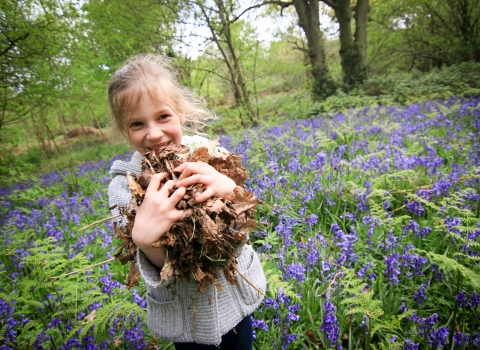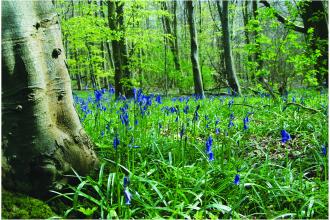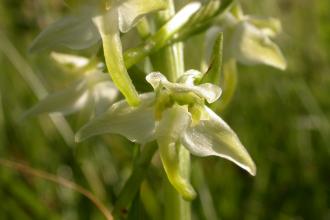Bluebell woods
Over the space of a few weeks in spring, from mid-April onwards, bluebells set our woodlands ablaze with their bright blue flowers. Their presence is a sure sign you are in a very old woodland.
The Wildlife Trusts care for hundreds of woodlands and look after some of the finest displays of bluebells in the country.
Find a bluebell wood near you
What to look for
Bluebells are the start of the show in springtime woodlands but there's lots more to see and hear too. Listen out for woodland birds singing from the branches. Many bluebells woods will be home to birds that have migrated thousands of miles to the UK to breed like the blackcap, wood warbler and chiffchaff. On the ground look for other woodland wildflowers among the bluebells like the delicate white stars of stitchwort and the unmissable pink spikes of early purple orchids. And remember: it’s not just about the colour. The flowers have a distinctive if subtle sweet scent: get down amongst the nodding flower heads and take a deep sniff too!
If you can't get to a bluebell wood
If you can't get to an old woodland look out for bluebells growing in road verges, in small patches of woodland and in parks and gardens in April and May. But outside ancient woodlands you might be looking at Spanish bluebells which are subtly different to our native English bluebells and can interbreed - in places forming 'hybrid swarms'.
More wildlife experiences
From seeing colourful wildflowers to spotting magnificent birds of prey, we can help you get closer to wildlife across North Wales.








